Posted: July 31st, 2014 | No Comments »
I happen to do be doing a bit of consulting on a new series of books from Palgrave called Pocket Consultants. My contribution has been to look at adding a few China-related titles to the list, so I thought I’d better plug them….
Palgrave Pocket Consultants is a new series of concise, market driven, technical guides which provide actionable solutions to specific, high-level business problems. Written for aspiring middle-to-senior managers working for start-ups, through to multinational corporations, Palgrave Pocket Consultants cover a range of key topics in modern business, including: Marketing, Branding and Advertising; Entrepreneurship and small business; HR and OB; Management and Strategy; Global Business; Business, Society and Culture and Innovation.
The series presents:
– Top-notch business authors: written in an accessible and concise way by leading experts who have first-hand experience of business and industry.
– Need-to-know knowledge: focused on the timeliest topics for the world of business and management, Palgrave Pocket Consultants solve problems that would otherwise drive a board or owner to employ a consultant.
– Accessible content: Palgrave Pocket Consultants are purpose built to provide clear, to-the-point guidance, available in print and digital and reasonably priced between £14.99-£19.99.
– Actionable solutions: the series will provide applicable guidance for middle-management to c-suite executives, business owners and entrepreneurs
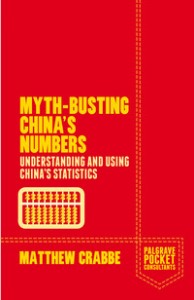
China is the world’s biggest consumer story, but foreign businesses are still getting it wrong due to lack of knowledge and understanding.
Myth-Busting China’s Numbers provides a unique and insightful critique of China’s economic data, analysing what businesses need to be aware of when interpreting this data and why.
From GDP down to micro-markets, demographics and company financials, this book looks at the flaws, inaccuracies and manipulations of data from major statistical categories, providing guidance on how to spot and rectify these issues, and allowing businesses to better understand their market and reduce risk. Featuring case studies of businesses that have failed and succeeded based upon on their understanding of China’s data, this book is invaluable to anyone with business or investment plans in China.
Palgrave Pocket Consultants are concise, authoritative guides that provide actionable solutions to specific, high-level business problems that would otherwise drive you or your company to employ a consultant. Written for aspiring middle-to-senior managers working across business at any scale, they offer solutions to the most cutting-edge issues across modern business. Be your own expert and have the advice you need at your fingertips.

Going beyond the scenes of the Chinese travel revolution, this book explains the emerging trends and developments of Chinese outbound travel, alongside the motivations, desires and expectations of Chinese leisure and business travelers. Featuring interviews with Chinese travelers, travel industry figures and travel journalists in different locations, global tourism boards, hoteliers, retail experts, marketing and branding consultants, the book helps business executives around the world to better understand the complexities and challenges of Chinese outbound travel, and create and deliver their own products and services that will meet the rapidly evolving and diversifying requirements of tech-savvy Chinese travelers.
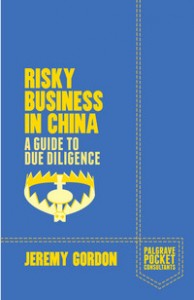
Risk is a major reason that companies fail in, or fail to enter, China. This unique book demonstrates how correctly-applied due diligence can not only reduce business risk in China, but also provide excellent business intelligence to support negotiations and business relationships. Based upon the author’s twenty years of consulting experience in China, this practical book is packed with real-world case studies of failures and successes, providing a valuable and detailed ‘road map’ to avoiding the most high-profile pitfalls of business in China.
Posted: July 30th, 2014 | No Comments »
I realise that the new kindle edition of News from Tartary I posted about yesterday did not have one of the most exciting covers ever produced by international publishing. So here’s a selection of previous covers that accompanied Fleming’s classic travel account….starting with by far the best….


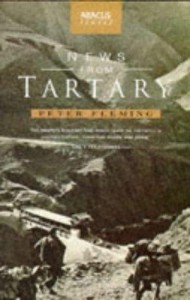
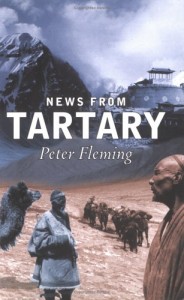

Posted: July 29th, 2014 | No Comments »
Lovely to see a new e-book edition of Peter Fleming’s News from Tartary, one of the great China travelogues, now out.
For anyone who doesn’t know why they should read Fleming here’s a link to my appreciation of him for Audible from some time back…
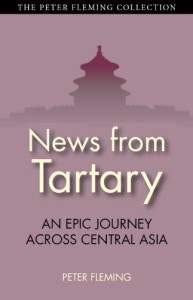 The journey took seven months and covered about 3,500 miles. and Motivated largely by curiosity, he set out with his companion Ella Maillart across a China torn by civil war to journey through Xinjiang to British India. It had been eight years since anyone had crossed Xinjiang; in between those who had entered this inhospitable and politically volatile area–under the control of a warlord supported by Stalin’s Red Army–seldom left alive. Entering the province by a little known route and following the path of the Silk Road, they ended up in Kashgar before crossing the Pamirs to India. Beautifully written and superbly observed, this is not simply an account of a part of the world few of us will ever see, but also a marvellous insight into the last days of the Great Game, when Britain and Russia still faced each other across a Central Asia in a state of anarchy.
The journey took seven months and covered about 3,500 miles. and Motivated largely by curiosity, he set out with his companion Ella Maillart across a China torn by civil war to journey through Xinjiang to British India. It had been eight years since anyone had crossed Xinjiang; in between those who had entered this inhospitable and politically volatile area–under the control of a warlord supported by Stalin’s Red Army–seldom left alive. Entering the province by a little known route and following the path of the Silk Road, they ended up in Kashgar before crossing the Pamirs to India. Beautifully written and superbly observed, this is not simply an account of a part of the world few of us will ever see, but also a marvellous insight into the last days of the Great Game, when Britain and Russia still faced each other across a Central Asia in a state of anarchy.
 And Fleming, actually in Tartary….
And Fleming, actually in Tartary….
Posted: July 28th, 2014 | No Comments »
Eileen Chang’s (Zhang Ailing) Half a Lifelong Romance is now available as a Penguin Modern Classic

From one of twentieth-century China’s greatest writers and the author of Lust, Caution, this is an unforgettable story of a love affair set in 1930s Shanghai.
Manjing is a young worker in a Shanghai factory, where she meets Shujun, the son of wealthy merchants. Despite family complications, they fall in love and begin to dream of a shared life together – until circumstances force them apart. When they are reunited after a separation of many years, can they start their relationship again? Or is it destined to be the romance of only half a lifetime? This affectionate and captivating novel tells the moving story of an enduring love affair, and offers a fascinating window onto Chinese life in the first half of the twentieth century.
Eileen Chang was born in Shanghai in 1920. She studied literature at the University of Hong Kong but returned to Shanghai in 1941 during the Japanese occupation, where she established her reputation as a literary star. She moved to America in 1955 and died in Los Angeles in 1995.
Posted: July 27th, 2014 | No Comments »
A bit of a deviation this but an interesting one I think. I’ve recently blogged about Jonathan Fenby’s e-book The Siege of Tsingtao and my own Betrayal in Paris, both part of the Penguin China World War One Series. One thing a lot of reviewers and readers have asked is about why Germany was in Tsingtao and what was this German Pacific Empire of theirs?
Well, the Germans of course were late comers to colonialism and need to scramble to grab some bits and pieces. German East Africa is perhaps better known and remembered but, from the 1860s, the Germans showed an interest in the the Samoan Islands and the unexplored north-east quarter of New Guinea with adjacent island territories. To be honest they didn’t do much with these places – too remote, inhospitable, plain uninteresting. But they did scramble for China to have a base for the Kriegsmarine in the Far East. Germany’s prewar colonies in the southern Pacific included German New Guinea and Micronesia (later incorporated into German New Guinea), Kaiser- Wilhelmsland, Bismarck Archipelago, Bougainville Island (all of which are now part of Papua New Guinea), Nauru, the Marshall Islands, the Mariana Islands (the present-day Northern Mariana Islands), the Caroline Islands (now the Federated States of Micronesia and Palau) and German Samoa (now Samoa).
Adrian McKinty’s The Sun of God is the true story of August Engelhardt’s cult that lived on the small island of Kabakon in New Guinea. Engelhardt’s cult had everything you’d expect from a German health cult – nudism, sun worship, odd dietary requirements (they termed themselves cocovores, living off coconuts and bananas and suffering malnutrition as a result!). According to Engelhardt – “Naked cocovorism is God’s will. The pure coconut diet makes man immortal and united with God.” So now you know.
However, there was apparently infighting and falling out and some unexplained deaths among the cultists in the early 1900s – hence the subject of McKinty’s book. The Sun of God is a great little trip into a side water of history that really hasn’t been swum in much.

It is 1906 and Will Prior is in self-imposed exile on a remote South Pacific island, working a small, and failing, plantation. He should never have told anyone about his previous existence as a military foot policeman in the Boer War, but a man needs friends, even if they are as stuffy and, well, German, as Hauptmann Kessler, the local government representative.
So it is that Kessler approaches Will one hot afternoon, with a request for his help with a problem on a neighbouring island, inhabited by a reclusive, cultish group of European ‘cocovores’, who believe that sun worship and eating only coconuts will bring them eternal life. Unfortunately, one of their number has died in suspicious circumstances, and Kessler has been tasked with uncovering the real reason for his demise. So along with a ‘lady traveller’, Bessie Pullen-Burry, who is foisted on them by the archipelago’s eccentric owner, they travel to the island of Kabakon, to find out what is really going on.
Posted: July 26th, 2014 | 2 Comments »
In 1929 the American movie stars Douglas Fairbanks and his wife, “America’s Sweetheart”, Mary Pickford visited Shanghai. Having won the first Oscar, Fairbanks was sent on a world tour to promote Hollywood. 5,000 fans flocked to Woosung to welcome the couple’s ship to Shanghai. However, the KMT government was concerned about the content of some of their films (see this post on The Chinese Mirror Chinese cinema blog). This photo shows Fairbanks and Pickford with the staff of the Mingxing Film Studio with Fairbanks standing next to the Shanghai starlet Hu Die (Butterfly Wu).
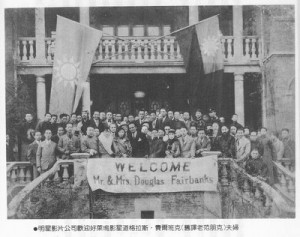

Fairbanks

Pickford
 Hu Die
Hu Die
Posted: July 25th, 2014 | No Comments »
An exhibition of photographs of old Limehouse Chinatown, and an interactive map up online too….
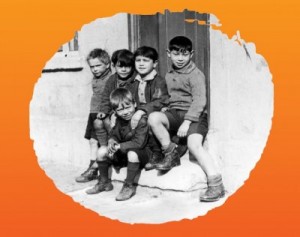
‘The Last Days of Limehouse’ is an exhibition of photos and interactive website and your very own downloadable audio tour to help you discover the fascinating history of Limehouse Chinatown. The exhibition is in the foyer of Limehouse Town Hall. The Limehouse Chinatown Website has an interactive map of the area.
Posted: July 24th, 2014 | 1 Comment »
I’ve blogged repeatedly over the years (since 2008 I just realised) about Beijing’s Chaonei No. 81 (here, here, and here) which has acquired something of a reputation as a haunted house. Of course, unless you are a complete idiot who believes fairies leave money under your pillow when teeth fall out, blokes in red come down chimneys with presents and that there’s an old man with a big beard who lives in the sky, you’ll realise it’s just an old house that has somehow managed to avoid destruction (something of a miracle itself in modern Peking). Interestingly now, thanks to a film “Jingcheng No. 81†or, in English, “The House That Never Dies” apparently (haven’t seen it, don’t know if it’s any good I’m afraid – there’s a trailer here), according to Amy Qin in the New York Times young people are “swarming” to the place.

It is of curse lovely that upwards of 500 people a day are visiting the house, and hopefully they’ll enjoy it, but there seems to be no resolution to what the owners, the Catholic Diocese of Peking, are intending to do with the building. The added interest in the property is not improving it – indeed it has been neglected for years and when I last saw it there was obvious signs of weather and rain related damage (and dumb stuff like windows left open during bad weather, missing roof tiles not replaced etc etc). Th Diocese says its renovation plans await approval – two things here: 1) what are these plans, what’s the budget, where are the funds coming from for renovation etc? – because, as we all know, renovation in Peking can mean a McDonald’s or a Starbucks or worse! all done with faux materials and workmanship and 2) we are all aware of the long game of architectural destruction in Peking (and across China) that lets planning and renovation applications run and run, never quite being approved until a) the place falls down or becomes so dilapidated it cannot be saved or b) a big property developer comes along with a suitcase of cash that appeals more than a sense of history to the local officials.
Anyway, the saga of Chaonei No. 81 continues….



















